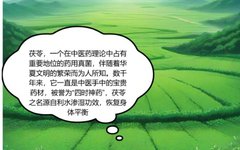
 Click the blue text to follow us
Click the blue text to follow us
Fu Ling (Poria), a medicinal fungus that holds an important position in Traditional Chinese Medicine (TCM) theory, has been known alongside the prosperity of Chinese civilization. For thousands of years, it has been a precious medicinal material in TCM, praised as a “divine medicine for all seasons,” its importance is self-evident. The name Fu Ling originates from its miraculous ability to promote urination and drain dampness, just as its name suggests, it can “detach” excess moisture from the body, allowing it to be expelled through urine, thus restoring the body’s balance. In the extensive application of TCM, Fu Ling has a gentle medicinal property, capable of expelling evil while supporting the righteous, promoting urination without harming the vital energy. Whether for cold or heat syndromes, whether for Qi deficiency or excess conditions, Fu Ling can exert its unique medicinal effects.
1 The “Divine Medicine for All Seasons” Across Time: The Medicinal Journey of Fu Ling
1. Ancient Medicinal History: Fu Ling, this ancient TCM material, is hidden in nature, yet attracts the attention of generations of physicians with its unique medicinal effects. In the classic text Shen Nong’s Herbal Classic, Fu Ling is detailed and classified as a superior medicine. Its medicinal value has been highly recognized, praised as a herb that “calms the soul and nourishes the spirit, prolonging life when taken for a long time.”
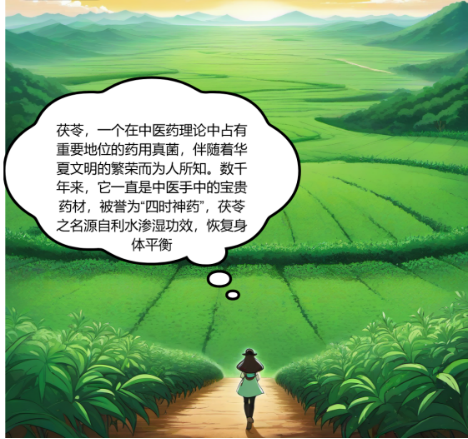
2. The Honor of “Divine Medicine for All Seasons”: Fu Ling, this TCM material praised as “divine medicine for all seasons,” is known for its gentle medicinal properties and wide range of applications.

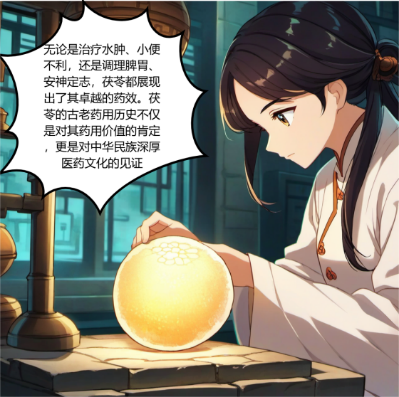
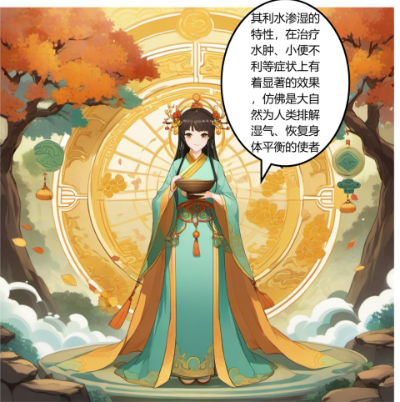
3. Modern Scientific Validation: From the perspective of modern science, the pharmacological effects and chemical components of Fu Ling are gradually being revealed, giving new vitality to traditional medicine.
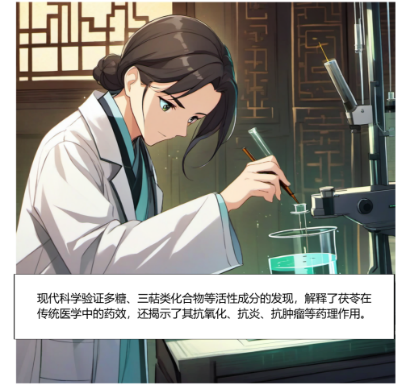
2 Pharmacological Effects of Fu Ling: From Ancient Wisdom to Modern Scientific Interpretation
1. Fu Ling in Ancient Wisdom
In ancient medical theory, Fu Ling was highly praised as a TCM material with broad therapeutic effects. Ancient physicians accumulated rich experience through long-term clinical practice, forming a profound understanding of the medicinal effects of Fu Ling. They not only observed the significant effects of Fu Ling in treating various diseases but also conducted preliminary explorations of its pharmacological effects.
2. Modern Scientific Interpretation of Fu Ling‘s Pharmacological Effects
With the rapid advancement of modern science and technology, medical researchers have been able to use advanced analytical tools and experimental methods to explore the pharmacological effects of Fu Ling more deeply. The modern medical interpretation of Fu Ling‘s pharmacological effects not only enriches our understanding of TCM materials but also opens up broad prospects for Fu Ling in the future medical field.
3. Antioxidant Effects of Fu Ling
Fu Ling, this ancient and miraculous TCM material, contains active components such as polysaccharides that exhibit excellent antioxidant effects. They can effectively eliminate free radicals in the body, which are the culprits of oxidative stress reactions that can damage cells and accelerate aging and disease onset. By clearing free radicals, the active components of Fu Ling can reduce oxidative stress damage to cells, thus playing a role in anti-aging and disease prevention.
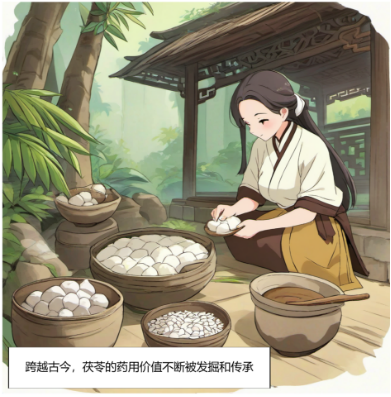
Fu Ling, this ancient and miraculous TCM material, has transcended a millennium and continues to thrive in modern medicine. The medicinal history of Fu Ling witnesses the profound depth of Chinese medicinal culture and reflects humanity’s reverence and exploration of nature. With the advancement of technology and in-depth research, we believe that more medicinal values and secrets of Fu Ling will be revealed, and its role in maintaining human health will become more prominent. In future medical research and applications, let us continue to explore and inherit the essence of this precious medicinal material, allowing it to contribute to human health in the new era.
References:
[1] Chen Weidong, Peng Hui, Wang Yanyan, et al. The Historical Evolution and Changes of Fu Ling Medicinal Material [J]. Chinese Herbal Medicine, 2017, 48(23): 5032-5038.
[2] Zhang Chaowei, Zhang Yu, Su Shan, et al. Research Progress on the Botany, Chemical Composition, and Pharmacological Effects of Fu Ling [J]. Hubei Agricultural Sciences, 2021, 60(2): 9-14; 19.
[3] National Pharmacopoeia Commission. Pharmacopoeia of the People’s Republic of China: 2020 Edition, Volume 1 [S]. Beijing: China Medical Science Press, 2020: 251.
[4] Choi E, Kang Y G, Hwang S H, et al. In vitro effects of dehydrotrametenolic acid on skin barrier function [J]. Molecules, 2019, 24(24): 4583.
[5] Fang Xiao, Ding Xiaoping, Zan Junfeng, et al. Research Progress on the Chemical Composition and Pharmacological Effects of Fu Ling Skin [J]. Asia-Pacific Traditional Medicine, 2019, 15(1): 187-191.
Copywriter: Liu Heng, Pharmacy Department, Inner Mongolia Autonomous Region Hospital of Traditional Chinese Medicine
Editor: Zhang Xingxing
Reviewer: Yu Lei

